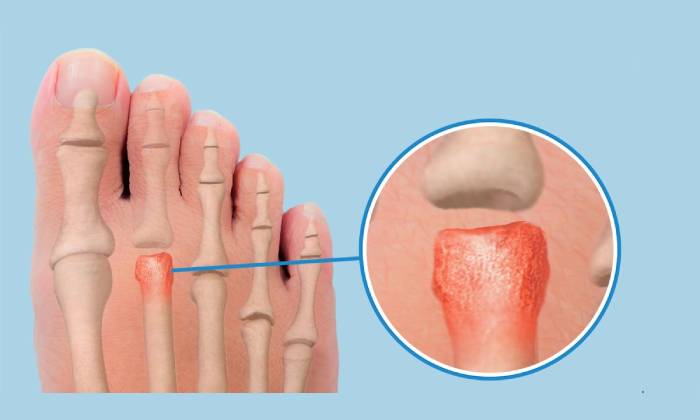
What is Freiberg’s Disease?
Freiberg’s disease is rare condition that primarily affects the second or third metatarsal (the long bones of the foot). Although people of all ages can be affected by this condition, Freiberg’s disease is most commonly diagnosed during adolescence through the second decade of life.
Symptoms
Common signs and symptoms of Freiberg’s disease include pain and stiffness in the front of the foot, which often leads to a limp. People with this condition may also experience swelling, limited range of motion, and tenderness of the affected foot. Some people describe the sensation of walking on something hard, like a stone or a marble. Symptoms are generally triggered by weight-bearing activities, including walking.
Occasionally, people with Freiberg’s disease have no obvious symptoms of the condition, with changes noted only on X-rays taken for other purposes. Whether these people will later develop symptoms is not known.
Cause
The exact cause of Freiberg’s disease is poorly understood. Some scientists believe that it is a multifactorial condition which is likely associated with the effects of multiple genes in combination with lifestyle and environmental factors. However, most current theories are centered on whether the triggering event is predominantly traumatic (injury-related) or vascular (consistent with avascular necrosis – an injury to the blood supply of the affected part of the foot).
Diagnosis
A diagnosis of Freiberg’s disease is often suspected based on the presence of characteristic signs and symptoms. An X-ray, magnetic resonance imaging (MRI), and/or bone scan can then be ordered to confirm the diagnosis. Other testing such as laboratory studies may also be recommended to rule out other conditions that cause similar features.
Treatment
The treatment of Freiberg’s disease depends on many factors, including the severity of condition; the signs and symptoms present; and the age of the patient. The primary goal of therapy is to rest the joint and reduce pain and swelling. A more conservative treatment approach is typically attempted initially which may include modification of activities with different types of casts, crutches and/or shoe inserts, as needed.
Our Services
Book Appointment
Book Your Appointment Today
We welcome your questions Do you have questions regarding your own situation? Do you actually want to resolve your problem and not just temporarily cover up the pain?




